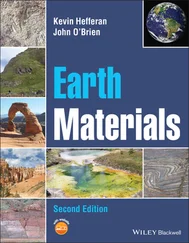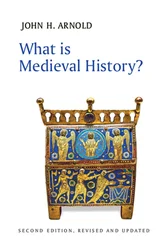Kristen St. John - Reconstructing Earth's Climate History
Здесь есть возможность читать онлайн «Kristen St. John - Reconstructing Earth's Climate History» — ознакомительный отрывок электронной книги совершенно бесплатно, а после прочтения отрывка купить полную версию. В некоторых случаях можно слушать аудио, скачать через торрент в формате fb2 и присутствует краткое содержание. Жанр: unrecognised, на английском языке. Описание произведения, (предисловие) а так же отзывы посетителей доступны на портале библиотеки ЛибКат.
- Название:Reconstructing Earth's Climate History
- Автор:
- Жанр:
- Год:неизвестен
- ISBN:нет данных
- Рейтинг книги:3 / 5. Голосов: 1
-
Избранное:Добавить в избранное
- Отзывы:
-
Ваша оценка:
- 60
- 1
- 2
- 3
- 4
- 5
Reconstructing Earth's Climate History: краткое содержание, описание и аннотация
Предлагаем к чтению аннотацию, описание, краткое содержание или предисловие (зависит от того, что написал сам автор книги «Reconstructing Earth's Climate History»). Если вы не нашли необходимую информацию о книге — напишите в комментариях, мы постараемся отыскать её.
how we know
what we know
Reconstructing Earth’s Climate History, Second Edition,
Reconstructing Earth's Climate History — читать онлайн ознакомительный отрывок
Ниже представлен текст книги, разбитый по страницам. Система сохранения места последней прочитанной страницы, позволяет с удобством читать онлайн бесплатно книгу «Reconstructing Earth's Climate History», без необходимости каждый раз заново искать на чём Вы остановились. Поставьте закладку, и сможете в любой момент перейти на страницу, на которой закончили чтение.
Интервал:
Закладка:
8 The oldest sediments in the modern ocean are ~200 million years (Myr) old. How would we learn about ocean conditions prior to 200 million years ago?
9 Based on Table 1.1and Figure 1.4a,b:Which archives have the widest geographic distribution and the greatest number of sites sampled?Which archives have the fewest sites sampled?
10 Where are there “gaps” in the geographic distribution of paleoclimate records? In other words, where has sampling been sparse?
11 Imagine there are two paleoclimate records both covering the last 500 000 yr, but with two different resolutions. Which would provide more details to scientists: the record that has a resolution of 100 yr or the record that has a resolution of 10 000 yr?
12 What is the general relationship between timeframe and resolution?The longer the timeframe of the record, the _______ [lower or higher] the resolution.Note that exceptions to this general rule exist. Such records are very valuable for helping to fill in details for older time periods.
13 Based on Table 1.1, what types of data can be obtained from at least three different types of archives?
14 Based on Table 1.1, what are three types of past climate conditions that can be inferred from paleoclimate archive data?
15 Imagine you have to reconstruct regional environmental and climatic conditions for the last 100 000 yr in Europe as completely as possible. Which archive(s) would you choose to use and why?
16 Imagine you have to reconstruct the global history of Earth's environmental and climatic conditions for the last 5 Myr as completely as possible. Which archive(s) would you choose to use and why?
17 Imagine you have to reconstruct the global history of environmental and climatic conditions of the Cretaceous Period (145–66 million years ago). What archive(s) would you choose to use and why?
Part 1.2. Obtaining Cores from Terrestrial and Marine Paleoclimate Archives
Coring allows scientists to access the record of a sequence of climatic and environmental conditions (i.e. a history) locked away in natural archives. Trees, corals, sediments, rock, and ice are all cored for paleoclimatic studies. Coresare narrow, cylindrical samples that extend through layer after layer of the material being investigated. Tree cores are thinnest, only ~0.5 cm diameter and <50 cm long. Coral, sediment, rock, and ice cores are often a few centimeters in diameter and of variable length (<50 cm to 10 m in length), depending on the coring technology used, the thickness of the material being cored, and the objectives of the study. Repeated drilling in the same hole can recover many successive meters of core from successively greater depths ( Figure 1.5). The deepest cored hole in glacial ice (EPICA Dome C) is over 3.2 km deep and is located on the high Polar Plateau in East Antarctica. The deepest cored hole in the seafloor is over 3.2 km deep and is located in the Nankai Trough in the Pacific Ocean near Japan.
In this exercise, you will investigate how cores are obtained from a set of terrestrial and marine paleoclimate archives. The fieldwork takes scientists to places near and far, and the approaches they use are purposeful and innovative. You will also explore issues common to all types of paleoclimate research, including the need for teamwork, for methods that keep samples uncontaminated and organized, for reproducible results, and for funding.

FIGURE 1.5. Example of (left) an ice core from Huascaran, Peru, and (right) a sediment core from the western equatorial Pacific Ocean.
(Source: photo credits: ice core – Lonnie Thompson, http://researchnews.osu.edu/archive/lonthmppics.htm;sediment core – Mark Leckie).
Coring Terrestrial Paleoclimate Archives
Here you can explore the fieldwork needed to obtain tree ring records, cave records, and ice core records. Lake records are not included here because you will explore a specific lake record in detail in Part 1.3as a paleoclimate case study.
Tree Rings: Dendrochronology
Trees grow both up and “out” each year, getting taller and expanding the trunk diameter. In locations with strong seasonality, this growth is marked by a pattern of rings inside the tree trunk. Each ring typically includes a lighter colored portion that results from tree growth during the spring and early summer, and a narrower and darker colored portion that results from slower tree growth during the fall; together each light and dark couplet marks a year of tree growth. The tree ring pattern is influenced by the climate conditions in the growing area. For example, a drought can limit growth, resulting in a narrower ring. You will work with tree ring data from SW North America in Chapter 14.
1 Re‐examine Figure 1.4b showing the global distribution of tree ring sample locations. How might tree ring development differ in tropical versus temperate latitudes?
2 Go to the supplemental resources to watch a video on coring living trees for paleoclimate research.What are two factors to consider when selecting a live tree for coring?Why is it important to go at least half‐way into the center of a tree?
3 While the oldest living trees are nearly 10 000 yr old, most trees do not live this long. For example, the average lifespan of a paper birch is 100 yr, and the average lifespan of a post oak is 250 yr. Extending the historical climate record from living trees further into the past requires correlating recognizable ring patterns in overlapping samples from living trees to dead trees (e.g. tree stumps and wooden beams in archeological sites) of the same species in the same geographic region. Why do you think it is important to use overlapping samples from trees of the same species to reconstruct past changes in regional climate?
Correlating ring patterns in overlapping samples not only extends the paleoclimate record that tree ring data can provide, but also confirms the dendrochronology (i.e. the tree ring timeline) – it helps ensure accurate ages are assigned to each layer by identifying the common pattern and flagging individual irregularities (e.g. incomplete rings, or missing rings). In addition, radiometric dating (in this case 14C dating) is commonly used in conjunction with ring counting techniques to ensure good age control. You will learn more about radiometric dating in Chapter 3.
Cave Deposits: Speleothems
Speleothems are secondary mineral deposits in caves. The term “secondary” is used because these mineral deposits are not part of the original limestone bedrock (which may be hundreds of millions of years old) that was dissolved by groundwater to form the cavities underground in the first place. The speleothems form later from water saturated in dissolved Ca 2+and CO 3 2−ions that drips into the cave through fractures in the cave ceiling, and precipitates solid calcium carbonate (CaCO 3). These mineral deposits are like the white spots and crusts that can build up around a household faucet if you have “hard” water (i.e. water with a lot of calcium carbonate dissolved in it) and a leaky faucet. The dripping water in a cave is connected to the hydrologic cycle; it was once rainwater that percolated down through the soil and became part of the groundwater system. As the water drips in a cave, it forms layers of solid mineral deposits hanging from the ceiling like icicles (stalactites) and building up on the floor (stalagmites) of the cave. While speleothems suitable for paleoclimate research are not technically cores, their natural formation shape is already cylinder or core‐like, the pristine center of which is sampled for isotopic analyses that can provide information on changes in past temperature, the water cycle, and the carbon cycle. You will work with speleothem data from South America in Chapter 3.
Читать дальшеИнтервал:
Закладка:
Похожие книги на «Reconstructing Earth's Climate History»
Представляем Вашему вниманию похожие книги на «Reconstructing Earth's Climate History» списком для выбора. Мы отобрали схожую по названию и смыслу литературу в надежде предоставить читателям больше вариантов отыскать новые, интересные, ещё непрочитанные произведения.
Обсуждение, отзывы о книге «Reconstructing Earth's Climate History» и просто собственные мнения читателей. Оставьте ваши комментарии, напишите, что Вы думаете о произведении, его смысле или главных героях. Укажите что конкретно понравилось, а что нет, и почему Вы так считаете.



